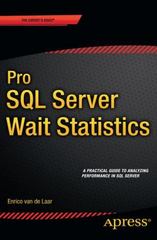Question
import java.util.Scanner; import java.util.Random; import javax.swing.JOptionPane; // Sammy Student public class RetailStore { Scanner scan = new Scanner(System. in ); public static void main(String args
import java.util.Scanner;
import java.util.Random;
import javax.swing.JOptionPane;
// Sammy Student
public class RetailStore
{
Scanner scan = new Scanner(System.in);
public static void main(String args[])
{
int rows = 6;
int columns = 8;
int[ ][ ] table = new int[rows][columns];
Random randomGen = new Random();
StringBuilder s = new StringBuilder();
int randomInt1 = 0;
int randomInt2 = 0;
// generate column titles
for (int j = 0; j < columns; j++)
{
s.append("\thr " + (j + 1));
}
s.append(" ");
// populate data for each cashier lane
for (int i = 0; i < rows; i++)
{
s.append("lane " + (i + 1));
s.append("\t");
for (int j = 0; j < columns; j++)
{
// express checkout lane
randomInt1 = 1 + randomGen.nextInt(20);
// standard checkout lane
randomInt2 = 1 + randomGen.nextInt(10);
if(i == 0)
table[i][j] = randomInt1;
else
table[i][j] = randomInt2;
s.append(table[i][j]);
s.append(" ");
s.append("\t");
}
s.append(" ");
}
System.out.println("data simulation: " + s);
System.out.println("");
// perform data analysis
// row analysis
String str = JOptionPane.showInputDialog(null, "enter a cashier lane number : ");
// subtract 1 to compensate for a zero indexed array
int laneNum = Integer.parseInt(str) - 1;
double average = 0.0, sum = 0.0;
for (int j = 0; j < columns ; j++)
{
sum += table[laneNum][j];
}
average = sum / columns;
System.out.println( "" );
String outputMsg = "";
outputMsg += " for cashier lane " + (laneNum + 1);
outputMsg += " the data analysis is: ";
outputMsg += " customer count -> " + Math.round(sum);
outputMsg += " average -> " + Math.round(average);
JOptionPane.showMessageDialog(null, outputMsg,
"Data Row Analysis", JOptionPane.PLAIN_MESSAGE);
// column analysis
str = JOptionPane.showInputDialog(null, "enter an hour number : ");
// subtract 1 to compensate for a zero indexed array
int hourNum = Integer.parseInt(str) - 1;
// reset the accumulating variable
sum = 0;
for (int i = 0; i < rows ; i++)
{
sum += table[i][hourNum];
System.out.println( table[i][hourNum] );
}
average = sum / rows;
System.out.println( "" );
outputMsg = "";
outputMsg += " for hour number " + (hourNum + 1);
outputMsg += " the data analysis is: ";
outputMsg += " customer count -> " + Math.round(sum);
outputMsg += " average -> " + Math.round(average);
JOptionPane.showMessageDialog(null, outputMsg,
"Data Column Analysis", JOptionPane.PLAIN_MESSAGE);
}
}
Once your program runs successfully you can now modify the program to include an additional checkout lane. Keep the same number of columns in your multi - dimensional array but just add another row.
Test your modified program.
Extra Credit: include an if() statement that will determine if the average of either your row or column analysis shows a value more than 10 .
Step by Step Solution
There are 3 Steps involved in it
Step: 1

Get Instant Access to Expert-Tailored Solutions
See step-by-step solutions with expert insights and AI powered tools for academic success
Step: 2

Step: 3

Ace Your Homework with AI
Get the answers you need in no time with our AI-driven, step-by-step assistance
Get Started


